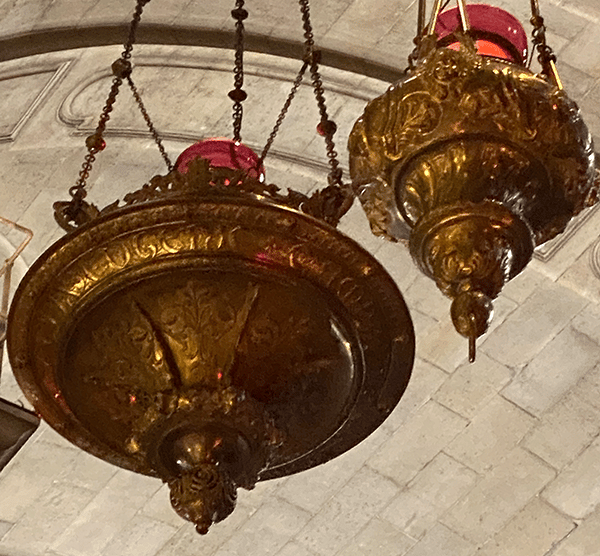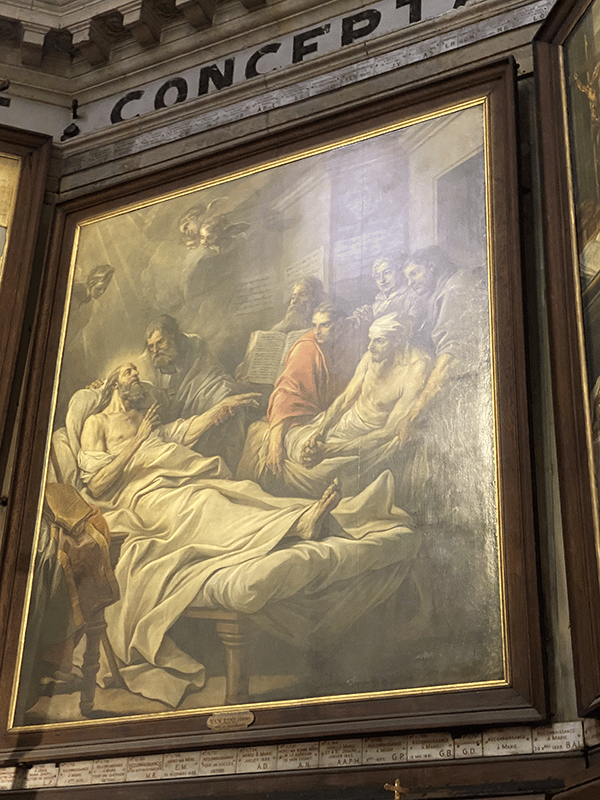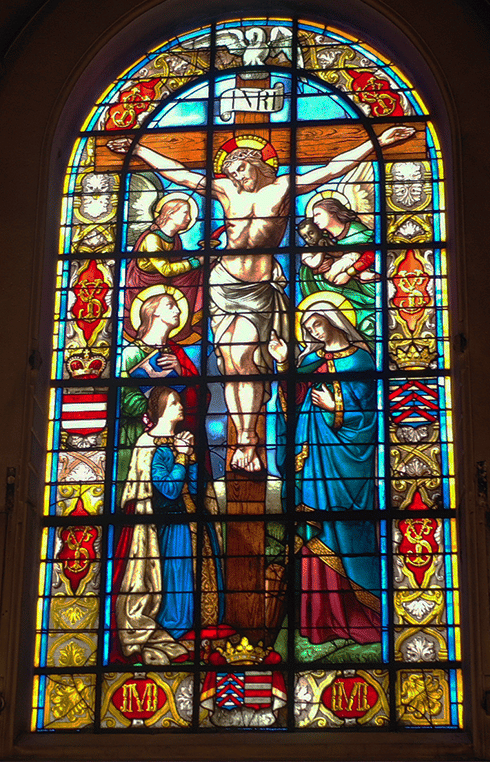The history of the more than 37.000 ex-votos
OF OUR LADY OF VICTORIES BASILICA
Anyone entering the sanctuary of Our Lady of Victories is bound to notice the countless ex-votos (from the Latin « thank you », « gratitude ») that cover the walls from the entrance to the sacristy, in the confessionals and side chapels. To date, there are 37,212 of them and the last one dates from July 5, 2021.
« For the healing of a mother, thanks to Mary.
2006″
How are they there and what do they want to express?
In 1836, Father Desgenettes consecrated his parish to the Immaculate Heart of Mary. Following this consecration, pilgrims from all over the world flocked to recommend their intentions to the Blessed Virgin.
Countless graces have been requested for nearly two centuries and many of those who have obtained them come to Our Lady of Victories and order an ex-voto that perpetuates their gratitude by publicizing the grace they received.
At the death of Father Desgenettes in 1860, there were 1.750; in 1874, there were 7.500 and in 1880 the 10.000 mark was passed.
The format of the marble plaques is very variable. The engraved text ranges from a simple « Thank you » to a very long text indicating the grace obtained.
The ex-votos can be classified in different categories:
– Healings
– Protections
– Conversions
– Vocations
– Births…
Sometimes, the inscription is a cry of faith, a praise to the glory of the Blessed Virgin, to exalt her Holiness, her Mercy.
Some ex-votos are also addressed to Saint Joseph and Saint Therese.
Most of the ex-votos are written in French, but there are a number of them written in Latin, English, German, Italian, Spanish, Portuguese, Hungarian… and even Vietnamese!
Many of these marbles come from private individuals, but some are donated by families, parishes, religious communities, cities, associations, military units…
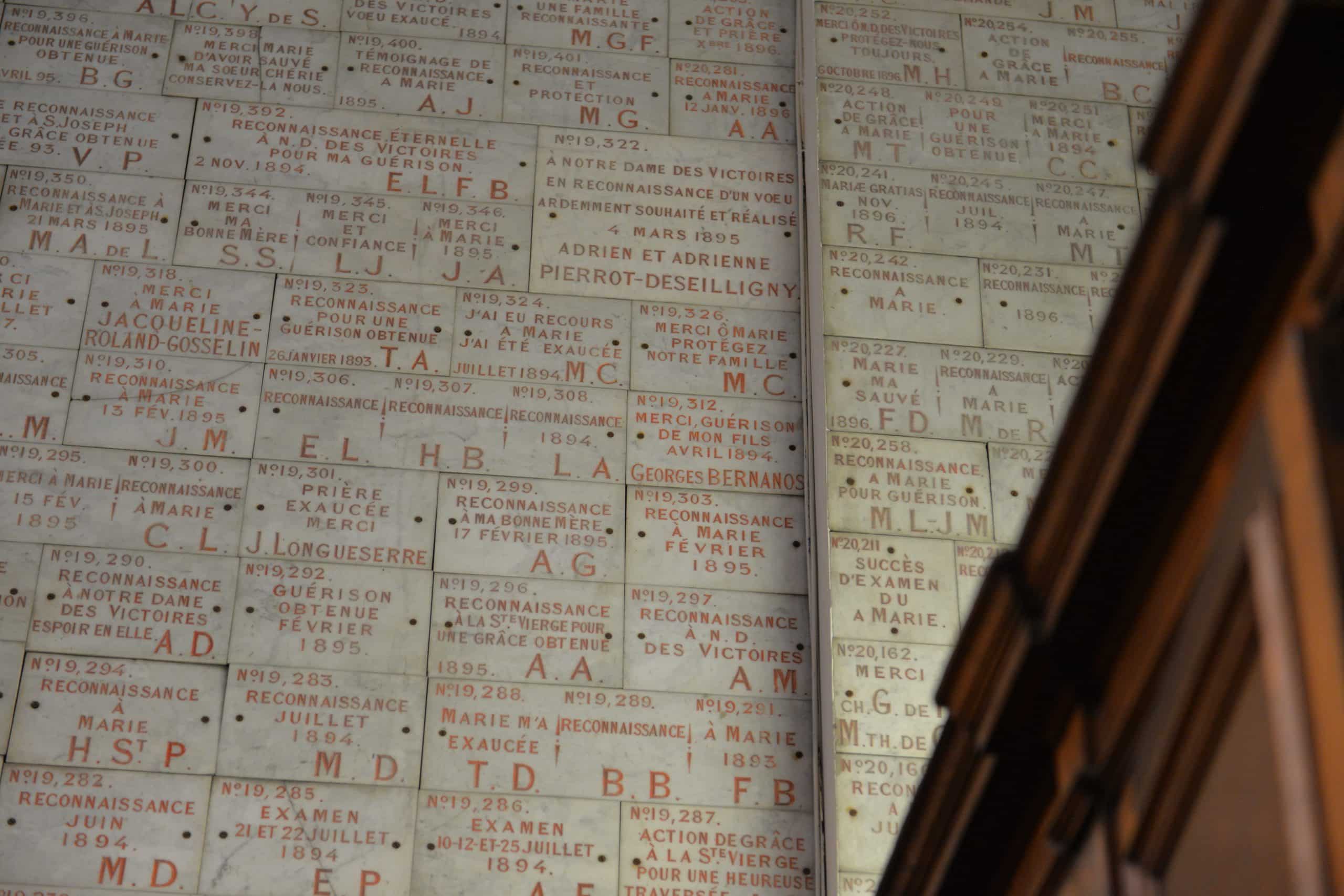
Some of these marble plaques recall the memory of illustrious people who came or not to the basilica
One of the oldest ex-votos dates from 1837 and concerns the conversion of England; it commemorates the Reverend G. Spencer who converted to Catholicism and became a religious with the Passionists.
On the wall to the right of the altar, an ex-voto honors the visit of Saint John Bosco in 1883.
On the same wall, there is an American ex-voto of the Roosevelt family in memory of Quentin Roosevelt, son of President Theodore Roosevelt, who fell in France in 1918, and Franklin Rooselvert Jr. who participated in the D-Day landings in 1944.
To the right of the statue of the Virgin, you can find the ex-voto of Edmond Michelet, a great French Resistance fighter who was deported and a minister of General De Gaulle.
In the choir, to the left of the altar, there is a huge ex-voto from Poland placed in 1855. In the heart in the center of the marble, there is Polish soil, bread, coins, a military cross and jewelry.
Opposite is the ex-voto of the parish of St. Laurent in Paris, which shows its gratitude to Our Lady of Victories for having been spared during the tragic events of the Commune.
At the entrance to the choir, there is an ex-voto recalling the visit of Saint Therese of Lisieux on November 4, 1887.
In 1903, Jacques Libman, who saved the statue of the Virgin Mary during the Commune, had an ex-voto placed in memory of this miraculous rescue in 1871. This was placed at the feet of the saved statue on the occasion of the 150th anniversary of the event.
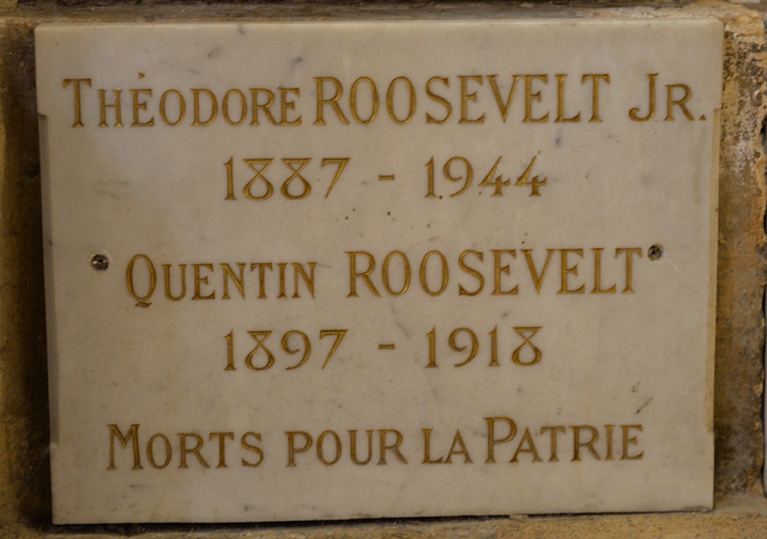
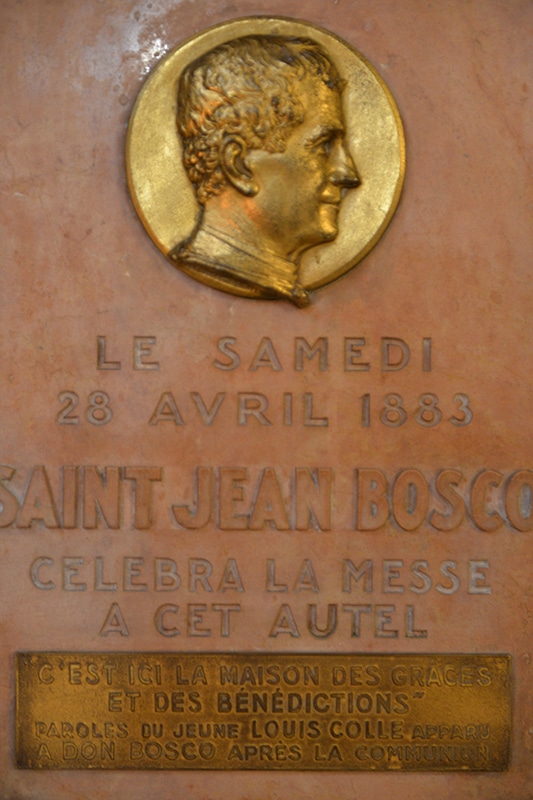
We also find military medals and decorations, jewelry…
The lamps placed above the chapel of the Virgin are also ex-votos! The most imposing one comes from the Empress Eugenie, wife of Napoleon III. Her first name is engraved on it and the date of this gift: 1859.
The paintings of the life of Saint Augustine located in the choir are also ex-votos of King Louis XV in gratitude to Mary for the graces obtained through her intercession by his royal predecessors.
So is the stained glass window above the main altar, an ex-voto of the Duke of La Rochefoucauld. When he was seriously ill, his wife began a novena and vowed to donate 10,000 francs if Our Lady of Victories would grant her husband a cure. On the 7th day of the novena, she came to see Father Desgenettes and said, « My husband is getting sicker and sicker. It occurred to me that God is asking me to make a sacrifice. I am resolved to offer myself to save my husband. On the evening of the last day of the novena, the duke recovered his health. But a few days later the duchess fell ill while nursing their son with diphtheria. Despite their prayers, both mother and child died. But the Duke of La Rochefoucauld honored his wife’s vow and gave Father Desgenettes the promised sum. With this money, the parish priest of Our Lady of Victories commissions the stained glass window you see. The weeping woman beside the cross is the duchess. At her side, you see the guardian angel of the child who is taking his soul to Heaven.
